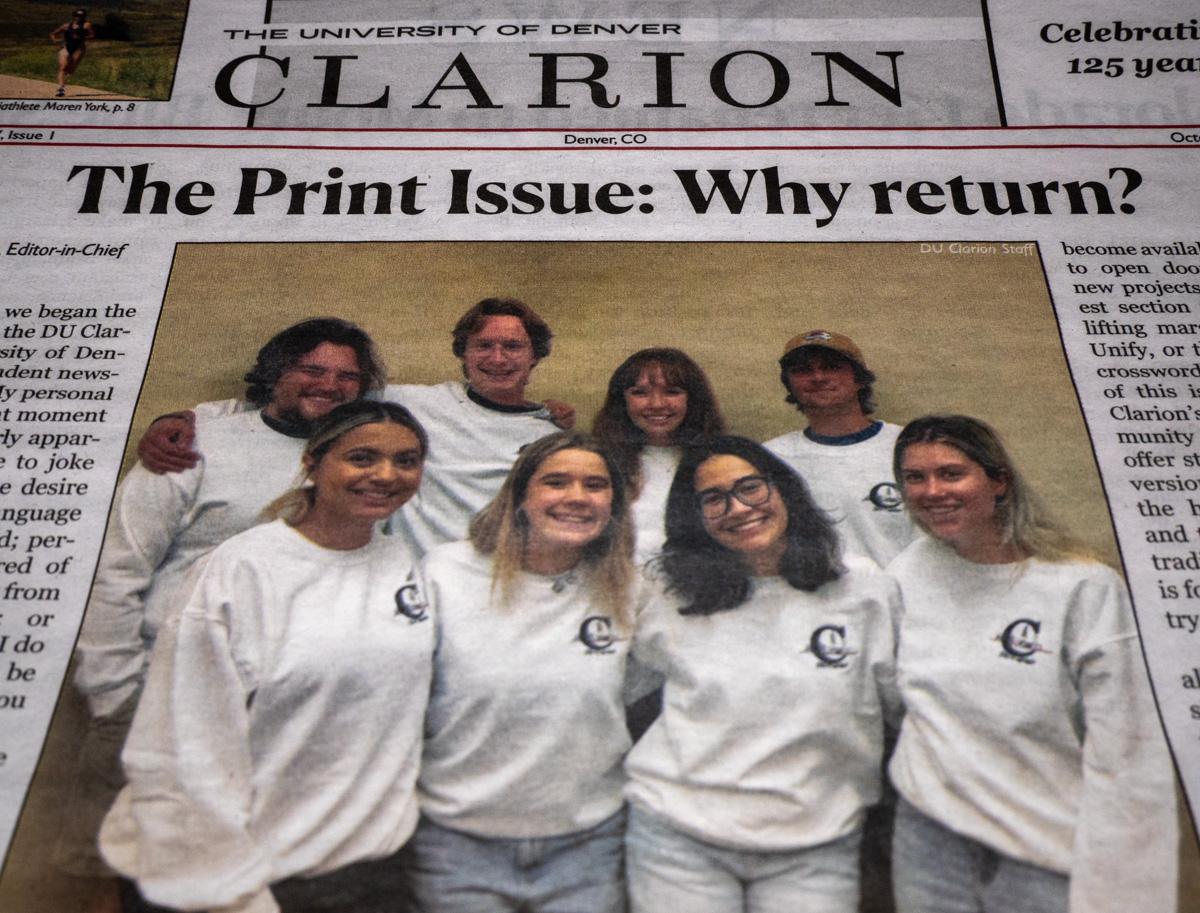DU Clarion Ends Years-Long Hiatus, Returns to Print

As it enters its 125th year in production, the University’s student-run newspaper, the DU Clarion, returned to print after a nearly four-year-long stint as an online-only publication.
In addition to publishing online weekly, the Clarion will print two special editions and distribute 1,000 copies across campus each quarter.
While thousands of local papers across the country have shuttered their doors in recent years, the Clarion’s staff has long been committed to reviving their print operations.
From the onset of his time with the Clarion, Editor-in-Chief and fourth-year student Aubrey Cox has pushed for a return to print. “Everybody will say it's up for debate,” Cox says. “Whether print is dying, already dead or is on the climb back, the expectation for me coming to DU was still that the student newspaper would be in print.”
Cox and Clarion Executive Editor Ambriel Speagle, who designed of the layout for the new print edition, are avid fans of print journalism. “We think there's still a lot of value to it, especially just readership wise, I feel like having something tangible that people can hold and pick up is more attractive than going on to a website,” Speagle says. “And it just helps get what we're writing out there a little bit easier.” Both joined the Clarion in 2020.
The prior year, the Clarion temporarily halted the print issue while ongoing campus construction relocated them from their home in Driscoll Underground to The Hub. A few months later, the temporary changes became permanent as the coronavirus pandemic left DU’s campus void of students.
By 2023, the Clarion had adapted to its new format, publishing articles each week in sections like arts and life, sports, opinion and most recently, Unify, which is dedicated to amplifying underrepresented and marginalized voices on campus. Bringing the print edition back was no easy task, with few of the Clarion’s staff having experience working with a physical publication. Fortunately, Speagle was one of those few, and—coupled with Cox’s drive, faculty expertise and the Clarion staff’s devotion—they were able to piece it all together.
The team dug through the University Archives, examining the Clarion’s layout and design throughout its many decades, and adapted the nameplate from a 1962 issue. Then they had to find a printer, which is no easy task in the modern era, Cox says. “There are plenty of printers around, but there are not many newspaper printers around.” Initially looking in Illinois, they settled on a Cheyenne, Wyoming-based printer that can fulfill their biquarterly printing needs. The Clarion plans on printing in weeks four and eight of the winter quarter, with hopes to expand their print schedule once they develop the logistics and infrastructure.
Publishing in print has significant benefits for the Clarion’s student-journalists, says Andrew Matranga, teaching professor in the Department of Media, Film & Journalism Studies and faculty advisor to the Clarion. Requiring the students to learn new software tools, write under different constraints, follow more meaningful deadlines and make countless creative choices, “print requires more focus, and more economy of space and language,” he says. “You are invariably going to be a better writer if it goes in print. Because you have less space to work with. You have inches as opposed to word counts.”
A printed paper’s consistent format also has its perks for readers, Matranga says, “When you know where to find certain things, your ability to consume news is changed dramatically,” he says. “One of the problems with digital is that it’s hard for readers to understand the difference between editorial and opinion, opinion and news, or editorial and news.”
And for Cox, the importance of continuing the Clarion’s 125-year run in print goes beyond opportunities for students to build skills and gain meaningful work experience while on campus. As far back as the pre-Revolutionary War trial and acquittal of journalist John Peter Zenger, he says, “Print and the foundation of our country are inextricably linked, and we're in a weird place press-wise and journalism-wise, generally, right now. I think that returning to our roots is a really powerful thing.” Maintaining space for community members to share their voices and get informed, Cox says, is absolutely crucial.
The Clarion welcomes students from all majors, of any skill level, to write, contribute and share their voice with the campus community. “We're always open to help them grow in any way that they can,” Speagle says, “And, I think it's the best club on campus.”







